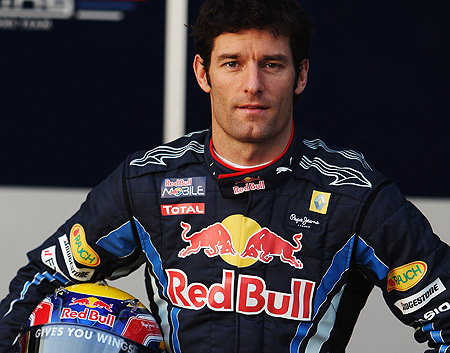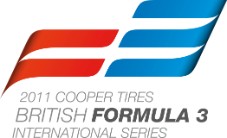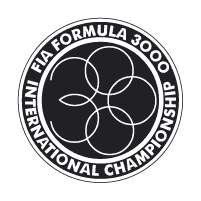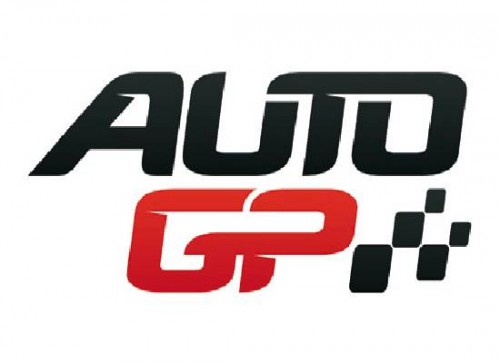The European Motorsport System
An overview of the ladders to climb. Actually, first things first - let's get rid of this term 'ladder'. People used to be able to talk about climbing the ladders to reach their goal. That's because the old system was set out like that. Each different formula would clearly be above one, and below another. Sadly, that simple system is gone. Now it's a cobweb of interlinked formulae and series. However, this does give us a few oppurtunities - there are different paths that we can take to get to the top of the ladder. So in some ways, this cobweb system might work to our advantage. One more thing - if you want to make it into F1, the best place to learn is in Europe. Racing ''across the pond'' in the USA, whilst fun, won't help you to build the same skills that you need for F1. A real life example: Mark Webber relocated from Australia to Europe, with just the clothes on his back. And in 2010, he nearly won the Drivers' World Championship. | Formula Racing = Open top, single seater racing |
Some Key Formulae
Here's a rough guideline of the formulae you may encounter on your way.
Formula 1 - This is the one we definitely want to encounter! The centre of the cobweb. I thought I'd give you a brief overview, just in case you craved more information. This is the pinnacle of Formula Racing. It has glitz and glamour, high-speeds and celebrity lifestyles. If you want the definition of Formula One, just watch a race at Monaco, Silverstone, Spa or Monza. Classic quality. Made up of just 24 drivers, racing for 12 different teams. To get into this, you must be part of the elite. All in good time... |
The GP2 Series - Essentially, F1's feeder series. A lot of the new drivers have raced in GP2. At the beginning of the next F1 year, the GP2 champion and/or a couple of the runners-up will be signed up to race for an F1 team. The key element of this series, and many more we'll encounter towards the outside of the cobweb, is that the cars are near-on identical. They use the same chassis, gearbox, engine, tyres etc. This means that driver skill will be critical, and it helps to differentiate between the good and the great, without clouding the statistics with different performing cars. There are 26 GP2 drivers. |
The GP3 Series - hmmm, what comes before GP2? Possibly... GP3? Yeah, nice one guys, really imaginative name. Well, to be honest, this helps us, because we can clearly guess that if GP2 feeds F1, then GP3 will feed GP2. So the beaten path would be to go from here to GP2 to F1. But as I said before, this isn't the only route you can take! Oh yeah... one more thing. Although the cars are the same, you can change the setup as you wish, as in any formula. Check out the setup guide for a rough guideline. GP3 features 30 drivers. |
Formula 3 Spec Cars - well, I'll be honest. I picked this logo because I think it looks pretty cool. But there's no single F3 logo, because there's no single F3 series. F3 is much more a type of car than a racing series. It's not the best place to show off your driver skills, but loads of manufacturers and designers enter F3-spec cars in different tournaments around the world, because the cars are free to design. So yes, the team will make a difference. Always look on the bright side - this could work in your favour - if you sign with a good team, you might have "F3 Champion" to put on your CV! |
Formula 2 / Formula 3000 - a few years back, the old Formula 3000 series was abolished. F3000 used to be the ''GP2'' of the old racing 'ladder' system. The FIA have since erected the Formula 2 championship. The cars are as identical as possible here, using Audi engines and Williams chassis. There are currently just 25 race seats in the championship. We are moving to the outside of the cobweb now, but it's always interesting to note these series, as the next F1 World Champion could come from anywhere. Paul Di Resta (champion to be?) entered the sport via DTM (see below). Gilles Villeneuve was a snowmobile racer (don't see below... I'm not sure if that's even around anymore) prior to racing in F1, which turned out to develop his skills on slippery, wet tracks very well. |
Formula Renault - This series is definitely getting towards the outside of the cobweb. You're much more likely to race in this earlier, rather than later - and if you still are in it many years later, you'll need to analyse why that is, and possibly need to a) change or b) accept that you don't have the skills needed for F1 (which is only the worst case scenario. Generally, you should do reasonably well if you can tell a car's front from its rear.) And besides, drivers like Damon Hill have proved that you don't need raw talent alone to become a Formula One world champion. He used hard work and supreme effort to drag the car home in first. Anyway, back to Formula Renault. Obviously, there's only one manufacturer in this series, and the cars are the same. The 3.5 formula is the higher of the two - so called because of the capacity of the engines used in it (litres). The 2.0 litre formula is also worth a look. (There's also a 1.6L, which is almost a go-kart.) I'd describe them both as being great training grounds. Spending a year or two there to hone your racecraft, work on your racing lines and speed, will really benefit you in the long run. |
Formula Ford - apologies for the low picture resolution. Formula Ford is an entry-level series, pretty much parallel to the Renault formula. The key difference is that this series does grant freedom of design - so as I mentioned earlier, if you want a great training ground, go for Formula Renault. However, as of 2012, Formula Ford may be worth a look. They're introducing an 'Ecoboost' series, with environmentally friendly engines. The series will be targeted at 'enthusiasts and amateurs', so it might be a good place to learn some skills. (Remember that an 'amateur/enthusiast' targeted series won't really help you to stand out as a great driver, as you won't be compared against many other really skilled drivers.) |
AutoGP - I'm moving on to a couple of 'obscure' series, in that they won't take you on a direct route. They're like a different cobweb, that's happened to overlap with this one. AutoGP is a small European racing series, that grants freedom of design to manufacturers. As a whole, you should be looking to prove yourself in series with equal cars, in order to show prospective employers your skills. |
DTM - the German touring car championship. It's not really a formula at all - 'tin-top' cars with passenger seats. However, I thought I'd mention it, because Force India's 'rookie' driver this year (Paul Di Resta) went from Formula 3, to DTM, and then into F1. Now obviously, he did make a name for himself in single-seat racing first (beating the likes of Vettel and Hamilton), but he found a very interesting method of breaking into F1. When you get offered a seat with an F1 team, the likelihood is that it won't be a race seat. They'll give you a test driver seat first, so you can continue racing in GP2/F3/DTM, and drive for the F1 team occasionally, during Friday practice sessions. It's important that you keep racing in other formulae once you have the test driver seat, because it will demonstrate that you have racing in your blood, and that you can't bear to simply 'test drive', you have to compete in races for yourself on your weekends off. |
You'll be pleased to know that I've finally finished listing the formulae. But there's one more, very important type of racing, that you 100% must compete in if you want to drive in F1. No, it's not snowmobile racing... click here to find out more about karting













